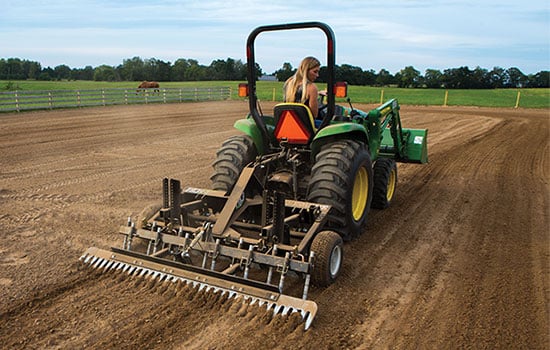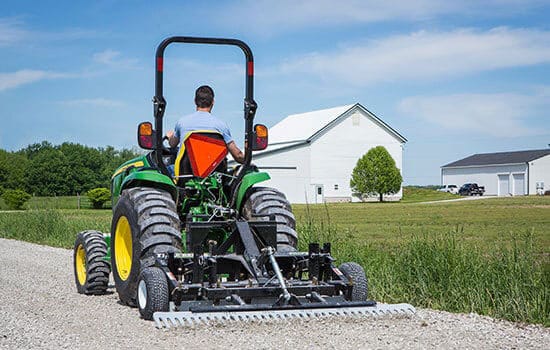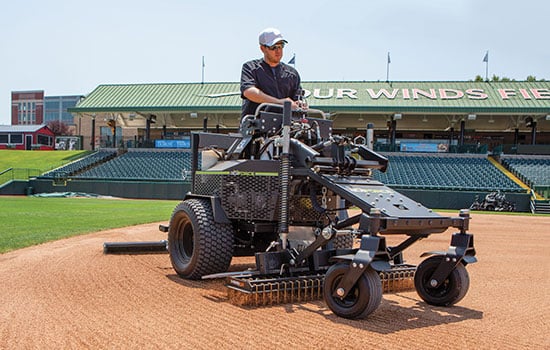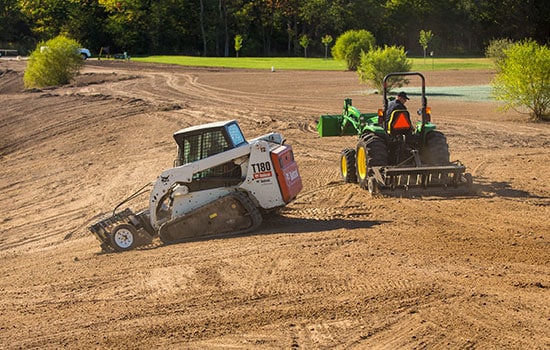ABI Classic Spreader 25 & 50 cuft – Initial Setup
Transcript
Greetings from ABI Attachments. My name is Taylor Coquillard, part of the customer service team. I’ve got our senior technician, Mike Rheem here along with us. First off, I want to say congratulations on your purchase of the ABI Classic Manure spreader, and welcome to the ABI family. We appreciate your business and trust. We’re gonna run down today. We’ve got a new model spreader. This is the 2016 50 cubic Classic Manure Spreader from ABI Attachments.
We’ve got a few new upgrades that we’re going to walk through with you today and explain how to then put these on. Put these together so we can get you up and spreading. So Mike and I are going to walk you through personally what we’re what we’re working here. We’re gonna start off with our safety year.
We’re starting off with a 9/16 ratchet set. We’ve also got a wrench as well that’s 9/16. And then we’ve got our knife here to be able to cut some of the pieces that are packaged separately.
I’ve also got my safety glasses on and I’ve got my my gloves here in the back here. So we’ll go ahead and get started.
Anything that you purchase with along with the spreader is going to be inside the spreader or already installed. That goes for options, including the end gate as well as the finds pan, which would come off the back of the spreader. So here this is the new model. Here we’ve got the the tongue actually inside the box of the spreader and we will install that up front here.
So we got the first under the banding. These are going to be your speed control plates, your notch plates for the handles here on the spreader.
So start there. Check to make sure everything’s all your contents are here. These are left and right side purposely. So make sure we’re not mixing up the different notch plates for the opposite side.
And there is a if you notice, there’s five notches on this, the top notch when it goes up to the top, that is a longer, deeper cut groove that will always face up on both plates. And just in case you mix up the plates. The one that has five notches on it is for your feed lever, remove the bolts. Those would be placed in before delivery and will actually be tightened down a little bit more than just hand tight. We just made them hand tight to do the video easier today.
That plate will slide right in. You’ll match up your pre-drilled pilot holes, you should be able to slide your bolts right through. We’re also going to, if you notice, we’re putting the bolt head inside on the inside track to finish the connection, we’ve got a locking washer with a nut as well to tighten this in here. Michael should go ahead and get this done for us.
So after you get this tight in here, I’ll have Mike show you the adjustment. The movement here. So your pitch your handle and all this will be speed adjustments. You’ve got the four speeds where you can choose which when you’re locked into.
The very top is neutral, first one down here is slowest.
And you got all the way down to four speed here. No movement there so we’ll move over to the right side than. Thanks, Mike, for doing the dirty work. Appreciate it.
You’ll also find your hitch pin tied up front here. When we get our first initial shipment, we want to make sure that you’re checking all the contents of the spreader. So you saw up front, we’ve got a couple of dangling pieces here with some zip ties to the notch plates in there near your hitch pin. And then inside the spreader, we’ve got both the tongue itself, the a-frame, and then we’ve also got the jack stand as well.
We recommend doing this insulation first with the handles, just so you can see the ease with the tongue here, normally it’s out of the a-frame’s out here in front. So without it and if you’re able to get in there and actually do some of the handwork it’s a lot easier, so recommend doing the handles first.
Now, we’re gonna go ahead and pull the tongue attachment out from inside the box. It’s an interesting design as well.
Then what you want to do to make it easier, remove the jack before you try and mount it. Yes, of course it’s wider that way, and easier to manipulate and otherwise, the jack hits this top plate.
We’ve got some carriage bolts inside here, with some locking washers as well, some nuts. And what this will do is this will lock in the tongue when we get it installed. So we’ve got some c-channel here. Also, the c-channel of the hitch will fit inside each other and you’ll be able to pull back right in for you. So, Mike and I’ll do that again. And I get my parts loose.
Here, you slide it back and then pull forward once you get lined up in this c-channel.
A little help out here from Nate Smith. He’s our lead engineer, Nate you want to show them yourself. We’re good to go. We’re all live. We’re going to go ahead and hook up the hitch at this point then. We’re live, we’re going to go. Same ABI spreader. I appreciate it Mike.
Once again, thank you for watching. Thank you for your purchase. And welcome to the ABI family. For Taylor, Mike, Matt and Andrew. Thanks for watching.



